Coccidia infections in cats can often go unnoticed, posing a hidden threat to their health. Recognizing the signs and symptoms of this intestinal parasite is crucial for timely intervention and treatment.
From subtle changes in behavior to gastrointestinal disturbances, cats may exhibit a range of indicators that warrant attention. Understanding how coccidia infections manifest and the available treatment options is vital for cat owners seeking to safeguard their pets' well-being.
By exploring the intricacies of this common feline ailment, individuals can equip themselves with the knowledge needed to protect their beloved companions from the potential consequences of coccidiosis.
Key Takeaways
- Regular fecal exams are essential for detecting coccidia in cats.
- Cats can get infected by ingesting soil or contaminated substances.
- Symptoms of coccidiosis include diarrhea, weight loss, and dehydration.
- Treatment may involve oral antimicrobials and monitoring with stool sample rechecks.
Coccidia Infection in Cats Overview
Coccidia infection in cats presents as a common parasitic affliction affecting the intestinal tract of felines. These single-celled parasites, including Isospora, Toxoplasma, and others, can lead to symptoms like diarrhea, weight loss, and dehydration.
Kittens and older cats with weakened immune systems are particularly susceptible. Diagnosis often requires fecal exams to detect the presence of oocysts. Treatment varies depending on the severity of the infection, with options ranging from supportive care to oral antimicrobials like Sulfadimethoxine and Ponazuril.
To prevent transmission, it is essential to maintain good hygiene practices, including cleaning litter boxes promptly and avoiding ingestion of contaminated substances. Regular fecal exams and environmental control are key in managing and preventing coccidia infections in cats.
Common Coccidia Species in Cats
Among the various species of parasites that affect felines' intestinal tracts, some commonly encountered species are Isospora, Toxoplasma, Hammondia, Besnoitia, Cryptosporidium, and Sarcocystis. Isospora species, such as Isospora felis and Isospora rivolta, are particularly prevalent in cats. Isospora felis, in particular, is known to cause coccidiosis in young kittens.
Toxoplasma gondii is another significant coccidia species that poses a zoonotic risk, potentially infecting both cats and humans. Hammondia, Besnoitia, Cryptosporidium, and Sarcocystis are also among the coccidia species that can affect felines. Understanding the common coccidia species that infect cats is crucial for effective diagnosis and treatment of these parasitic infections, highlighting the importance of regular veterinary care and fecal exams for feline health.
Transmission Routes of Coccidia
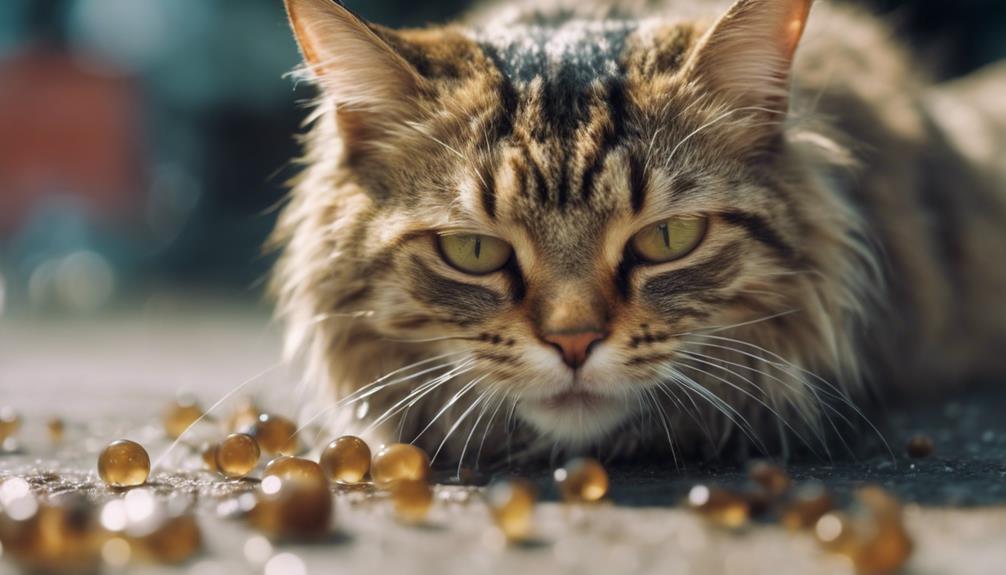
Understanding how coccidia are transmitted is crucial for effective prevention and control of these parasitic infections in cats. Cats primarily get infected by ingesting soil or contaminated substances containing infective oocysts. Additionally, coccidia can be transmitted through the ingestion of infected intermediate hosts like mice, rats, crickets, and cockroaches. Grooming fur and paws can also lead to coccidia ingestion.
Environmental control, such as promptly cleaning litter boxes and minimizing hunting habits, plays a vital role in preventing coccidia infection. Regular fecal exams are essential for detecting coccidia early and reducing the risk of transmission. By being mindful of these transmission routes and taking appropriate preventive measures, cat owners can help safeguard their feline companions against coccidia.
Importance of Regular Fecal Exams
Regular fecal exams play a crucial role in the early detection and management of coccidia infections in cats. These exams are essential for identifying the presence of coccidia oocysts in the feces of infected cats, even before noticeable symptoms develop.
By routinely examining fecal samples under a microscope, veterinarians can promptly diagnose coccidia and initiate appropriate treatment measures. Since symptoms of coccidiosis can mimic those of other gastrointestinal issues, fecal exams help differentiate coccidia infections from other illnesses, ensuring targeted interventions.
Regular monitoring through fecal exams also aids in assessing treatment effectiveness and preventing potential reinfections. Therefore, incorporating regular fecal exams into your cat's healthcare routine is vital for maintaining their well-being and managing coccidia infections effectively.
Symptoms of Coccidiosis in Cats
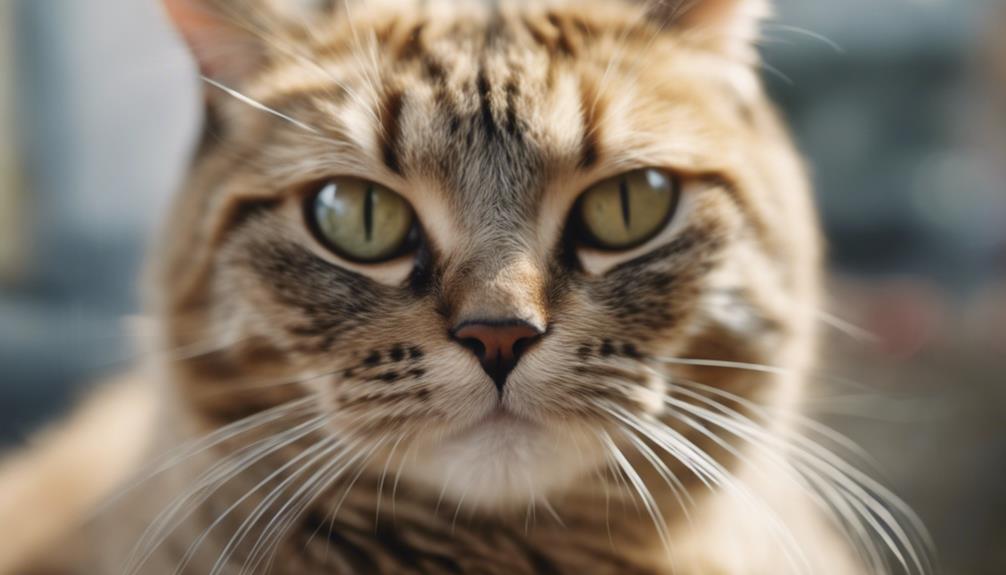
Coccidiosis in cats may manifest through various symptoms that can indicate an underlying infection with these single-celled parasites. Common signs of coccidiosis include diarrhea, which may range from mild to severe, often containing blood or mucus. Weight loss, dehydration, lethargy, and a lack of appetite are also prevalent.
In severe cases, cats may experience anorexia, vomiting, and potentially fatal outcomes if left untreated. Observing changes in litter box habits, such as increased frequency or straining during defecation, can also be indicative of coccidiosis.
If you notice any of these symptoms in your cat, prompt veterinary attention is crucial to diagnose and treat the infection effectively.
Diagnosis Through Fecal Exams
Symptoms of coccidiosis in cats often prompt veterinarians to conduct fecal exams for accurate diagnosis and identification of coccidia oocysts. These exams involve analyzing a stool sample under a microscope to detect the presence of coccidia oocysts. Here is a table summarizing the key points about diagnosing coccidia through fecal exams:
| Aspect | Details | Importance |
|---|---|---|
| Sample Collection | Fresh fecal samples are preferred for accuracy | Ensures reliable results |
| Microscopic Examination | Oocysts are identified and counted | Confirms coccidia infection |
| Diagnostic Accuracy | Helps differentiate coccidia from other parasites | Guides appropriate treatment |
Fecal exams are essential for a definitive diagnosis of coccidiosis in cats, enabling prompt treatment and management.
Treatment Options for Coccidia
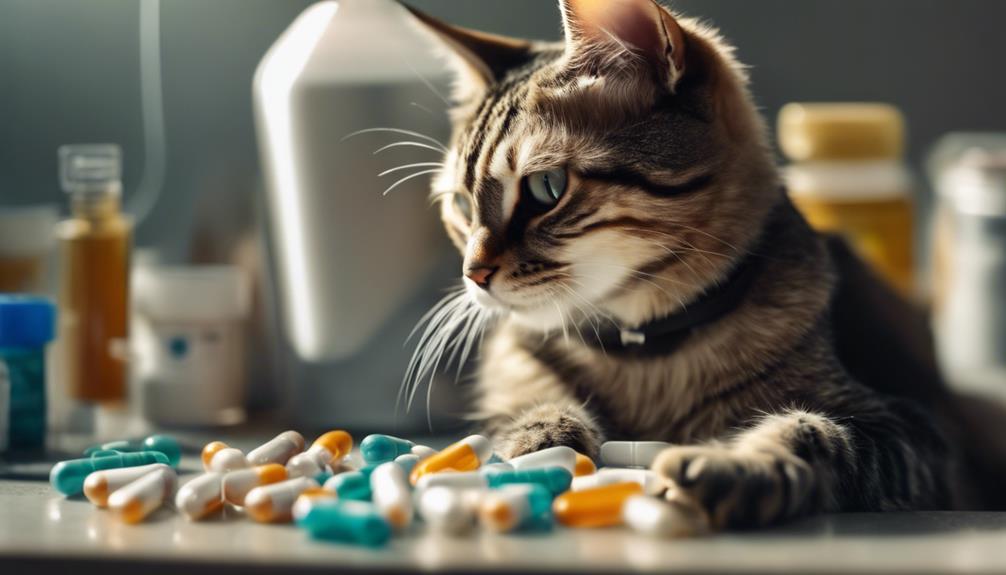
When addressing coccidia infection in cats, effective treatment options play a crucial role in managing the parasitic condition. Not all infected cats require treatment, as some can naturally eliminate the parasite. However, for symptomatic cases or when the infection persists, treatment becomes necessary.
Commonly used oral antimicrobials for coccidia include Sulfadimethoxine and Ponazuril. Additionally, providing an easily digestible diet and supplementing with probiotics can aid in the recovery of asymptomatic cats. It is essential to follow the veterinarian's guidance regarding the dosage and duration of treatment to ensure successful eradication of the parasite.
Regular monitoring through stool sample rechecks is vital to assess treatment effectiveness and prevent the development of resistance.
Monitoring Treatment Effectiveness
Monitoring the effectiveness of treatment for coccidia infection in cats involves regular assessment of response to therapy through stool sample rechecks and clinical observation.
To ensure the treatment is working efficiently, consider the following:
- Consistent Stool Sample Analysis: Regularly checking stool samples helps track the presence of coccidia oocysts.
- Observing Clinical Symptoms: Monitoring your cat's behavior, appetite, and overall well-being can provide insights into the treatment's effectiveness.
- Adherence to Treatment Plan: Following the prescribed medication schedule diligently is crucial for successful treatment outcomes.
- Consultation with Veterinarian: Regular communication with your vet allows for adjustments to the treatment plan if needed, ensuring the best care for your feline companion.
Resilience of Coccidia Parasites
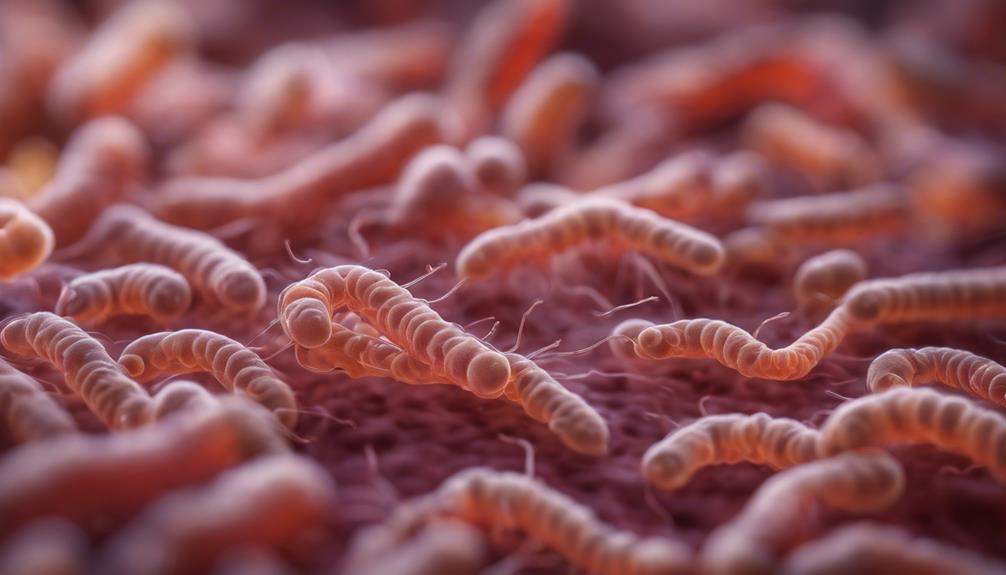
Coccidia parasites exhibit remarkable resilience to standard disinfection methods, posing a challenge for effective environmental control strategies. These resilient parasites can withstand routine disinfectants, remaining viable in the environment for up to a year. Their ability to survive in various conditions makes it crucial to implement stringent cleaning practices.
Prompt and thorough cleaning of litter boxes and living areas is essential to minimize the risk of coccidia infection. Additionally, considering that even asymptomatic cats can shed infectious oocysts, yearly fecal exams are imperative for early detection.
Cleaning and Disinfection Practices
Effective cleaning and disinfection practices play a crucial role in preventing the transmission and spread of coccidia parasites among feline companions. To ensure a safe environment for your cats, consider the following practices:
- Regularly clean and disinfect litter boxes, food and water bowls, and bedding.
- Use appropriate disinfectants known to be effective against coccidia.
- Wash your hands thoroughly after handling an infected cat or cleaning contaminated areas.
- Implement a cleaning schedule to maintain a hygienic living space for your feline friends.
Shedding of Oocysts by Asymptomatic Cats
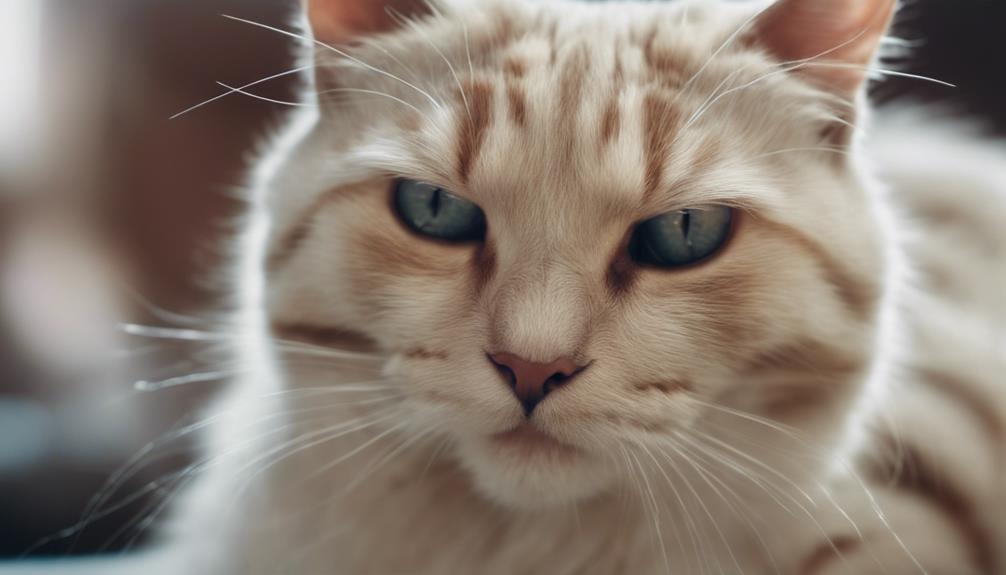
The silent dissemination of coccidia through oocyst shedding by asymptomatic cats poses a significant challenge in controlling the spread of this parasitic infection within feline populations.
Asymptomatic cats, while showing no outward signs of illness, can harbor coccidia in their intestines and shed infective oocysts in their feces. These oocysts, resilient in the environment, can contaminate the surroundings and infect other cats through ingestion.
Since asymptomatic cats do not display symptoms, they may go unnoticed, leading to the inadvertent transmission of coccidia. Regular fecal exams are crucial in detecting the presence of coccidia in asymptomatic cats to prevent further dissemination and protect the overall feline population from this parasitic infection.
Preventing Coccidia Spread in Environments
Minimizing environmental contamination plays a crucial role in preventing the spread of coccidia among feline populations. To effectively prevent the spread of this parasite, consider the following:
- Regular Cleaning: Thoroughly clean litter boxes and living areas to reduce the presence of oocysts.
- Proper Hygiene: Wash your hands after handling cats, especially if they have diarrhea or are known to be infected.
- Isolation: Separate infected cats from healthy ones to prevent transmission.
- Consultation: Seek veterinary advice on disinfectants effective against coccidia to ensure proper cleaning protocols.
Minimizing Hunting Behavior in Cats
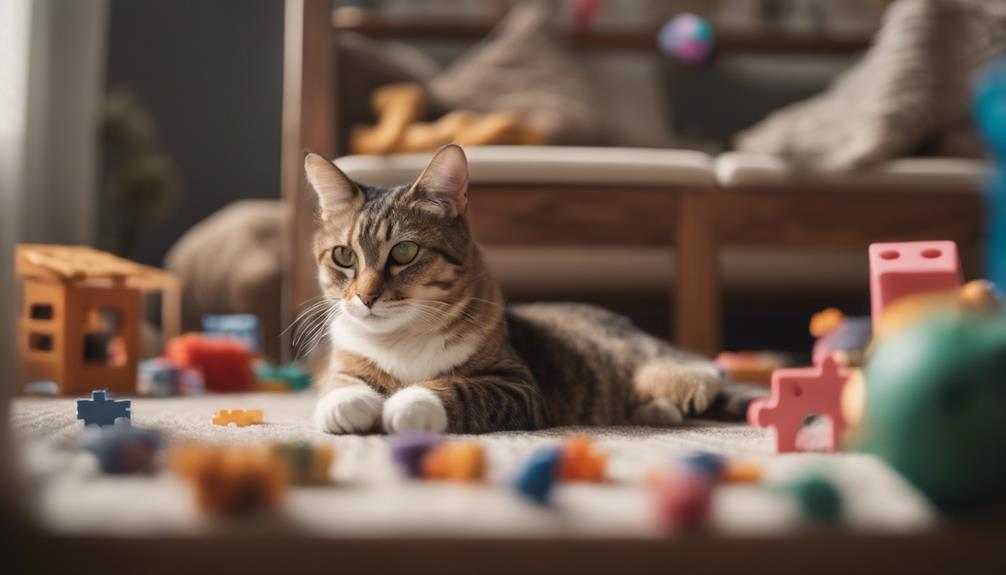
To reduce the risk of coccidia transmission among feline populations, addressing and managing hunting behavior in cats is a crucial aspect of preventative care. Hunting is a natural instinct for cats, but it can increase their exposure to potential sources of infection, including small rodents and birds carrying coccidia oocysts.
Minimizing hunting behavior can be achieved by providing interactive toys that stimulate their predatory instincts, engaging them in indoor play sessions, and creating a stimulating environment with climbing structures. Additionally, feeding cats a balanced diet to meet their nutritional needs can help reduce their drive to hunt.
Environmental Enrichment for Cats
Implementing enriching environmental stimuli is essential for promoting feline well-being and behavioral health. Enriching a cat's environment involves providing opportunities for mental and physical stimulation.
Consider the following to enhance your cat's surroundings:
- Interactive toys that encourage play and exercise.
- Cat trees or shelves for climbing and perching.
- Puzzle feeders to engage your cat's hunting instincts.
- Access to window perches for visual stimulation and sunlight enjoyment.
Frequently Asked Questions
Can Indoor Cats Get Coccidia Infections, or Is It More Common in Outdoor Cats?
Coccidia infections can affect indoor cats as well as outdoor cats. Transmission can occur through contaminated substances or grooming behaviors. Regular fecal exams are key for early detection and prevention, regardless of the cat's living environment.
Are There Any Natural Remedies or Supplements That Can Help Prevent Coccidia Infections in Cats?
While natural remedies and supplements may be appealing, evidence supporting their efficacy in preventing coccidia infections in cats is limited. Consult with a veterinarian for guidance on proven preventive measures, such as environmental control and regular fecal exams.
How Long Does It Typically Take for a Cat to Recover From a Coccidia Infection With Treatment?
Recovery from coccidia infection in cats varies, typically taking 1-3 weeks with appropriate treatment. Monitoring through regular veterinary check-ups and fecal exams is essential. Adhering to prescribed medications and maintaining a clean environment aids in faster recuperation.
Can Other Pets in the Household, Such as Dogs or Rabbits, Be at Risk of Contracting Coccidia From an Infected Cat?
Other pets in a household, such as dogs or rabbits, can be at risk of contracting coccidia from an infected cat through exposure to contaminated feces. Regular fecal exams for all pets and preventive measures are essential.
Are There Any Specific Dietary Recommendations or Restrictions for Cats Recovering From Coccidia Infections to Help Support Their Recovery?
After recovering from coccidia infections, cats may benefit from easily digestible diets and probiotics to support their recovery. Monitoring their progress through regular check-ups and maintaining a clean environment are crucial for their well-being.
Can Feline Calicivirus Lead to Coccidia in Cats?
Feline calicivirus in cats is a highly contagious virus that can weaken a cat’s immune system. This may make them more susceptible to other infections, such as coccidia. Coccidia is a parasitic infection that can cause diarrhea, dehydration, and weight loss in cats. It’s important to monitor your cat’s health and seek veterinary care if they show any signs of illness.
Conclusion
In conclusion, coccidia infections in cats can have serious health implications if left untreated. Understanding the signs, symptoms, and transmission routes of coccidiosis is crucial for cat owners to protect their feline companions.
By implementing prevention measures, such as regular fecal exams, minimizing hunting behavior, and providing environmental enrichment, cat owners can mitigate the risk of coccidia infections and ensure the well-being of their pets.




